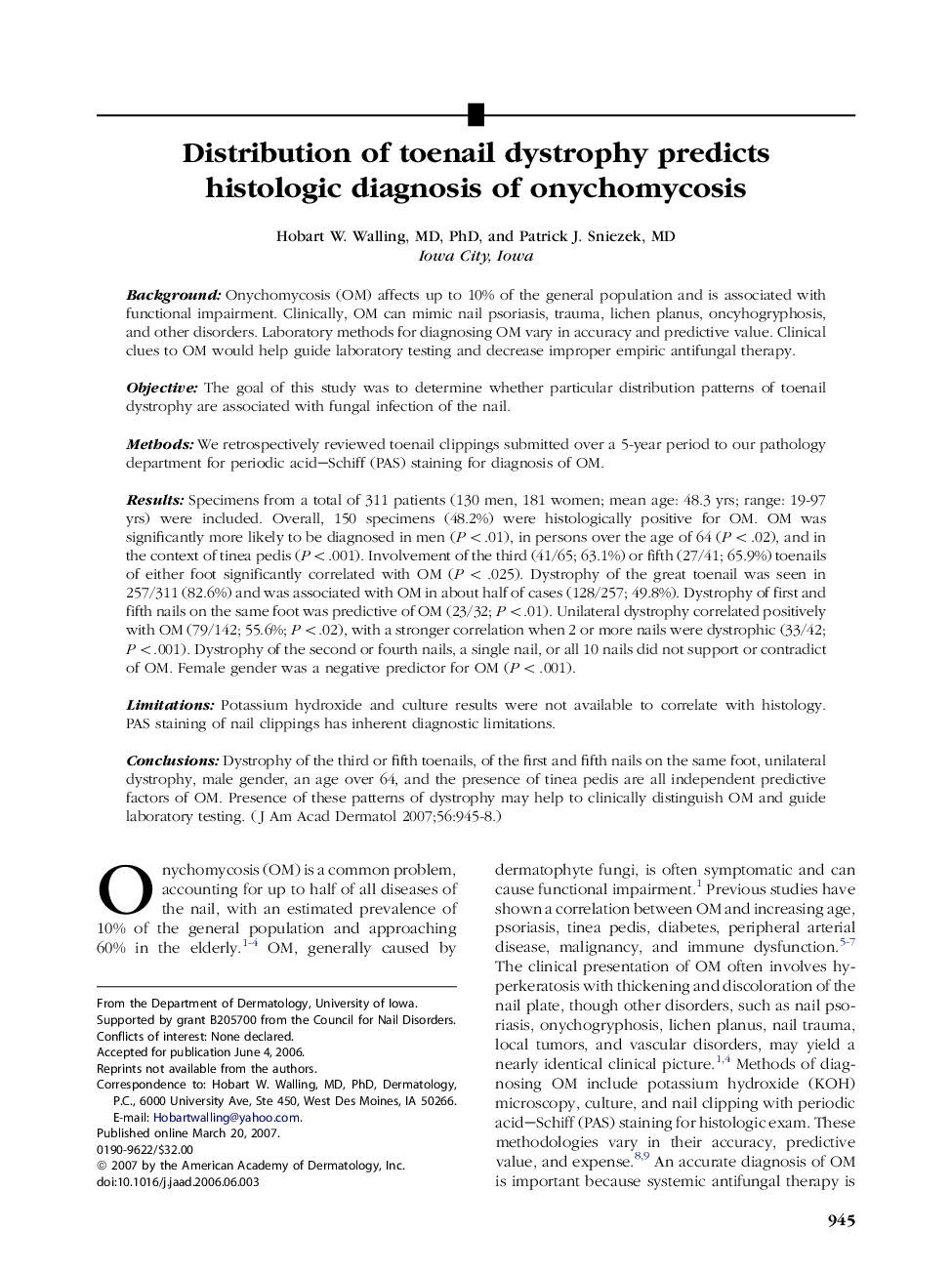| کد مقاله | کد نشریه | سال انتشار | مقاله انگلیسی | نسخه تمام متن |
|---|---|---|---|---|
| 3211669 | 1587642 | 2007 | 4 صفحه PDF | دانلود رایگان |

BackgroundOnychomycosis (OM) affects up to 10% of the general population and is associated with functional impairment. Clinically, OM can mimic nail psoriasis, trauma, lichen planus, oncyhogryphosis, and other disorders. Laboratory methods for diagnosing OM vary in accuracy and predictive value. Clinical clues to OM would help guide laboratory testing and decrease improper empiric antifungal therapy.ObjectiveThe goal of this study was to determine whether particular distribution patterns of toenail dystrophy are associated with fungal infection of the nail.MethodsWe retrospectively reviewed toenail clippings submitted over a 5-year period to our pathology department for periodic acid–Schiff (PAS) staining for diagnosis of OM.ResultsSpecimens from a total of 311 patients (130 men, 181 women; mean age: 48.3 yrs; range: 19-97 yrs) were included. Overall, 150 specimens (48.2%) were histologically positive for OM. OM was significantly more likely to be diagnosed in men (P < .01), in persons over the age of 64 (P < .02), and in the context of tinea pedis (P < .001). Involvement of the third (41/65; 63.1%) or fifth (27/41; 65.9%) toenails of either foot significantly correlated with OM (P < .025). Dystrophy of the great toenail was seen in 257/311 (82.6%) and was associated with OM in about half of cases (128/257; 49.8%). Dystrophy of first and fifth nails on the same foot was predictive of OM (23/32; P < .01). Unilateral dystrophy correlated positively with OM (79/142; 55.6%; P < .02), with a stronger correlation when 2 or more nails were dystrophic (33/42; P < .001). Dystrophy of the second or fourth nails, a single nail, or all 10 nails did not support or contradict of OM. Female gender was a negative predictor for OM (P < .001).LimitationsPotassium hydroxide and culture results were not available to correlate with histology. PAS staining of nail clippings has inherent diagnostic limitations.ConclusionsDystrophy of the third or fifth toenails, of the first and fifth nails on the same foot, unilateral dystrophy, male gender, an age over 64, and the presence of tinea pedis are all independent predictive factors of OM. Presence of these patterns of dystrophy may help to clinically distinguish OM and guide laboratory testing.
Journal: Journal of the American Academy of Dermatology - Volume 56, Issue 6, June 2007, Pages 945–948